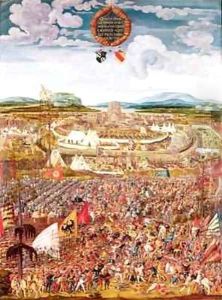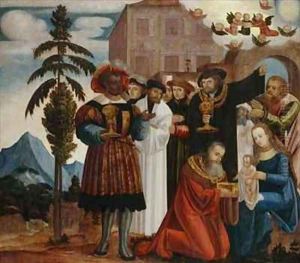Melchior Feselen Paintings
Melchior Feselen was a German Renaissance painter, born around 1495, whose work is characterized by its detailed craftsmanship and vibrant use of color. He is considered one of the notable artists of the Danube School, a style that flourished in the early 16th century in southern Germany and Austria, known for its expressive landscapes and emotive religious scenes.
Little is known about Feselen's early life, including the exact date and place of his birth. However, it is believed that he was active in the Bavarian town of Ingolstadt. His career spanned a brief period in the early 16th century, and during that time, he created a small but significant body of work that has been recognized for its artistic merit.
One of Feselen's most famous works is the 'Siege of Alesia,' painted in 1533, which depicts Julius Caesar's siege of the Gallic fort at Alesia in 52 BC. This painting is notable for its dynamic composition and the detailed rendering of the figures and landscape. It is housed in the Bavarian State Painting Collections.
Feselen's style combined the traditional elements of late Gothic art with the emerging techniques and naturalistic approach of the Renaissance. His figures are often portrayed with a strong sense of movement and emotion, and his use of color and light shows an understanding of Italian Renaissance innovations, though his work remained rooted in the Northern European tradition.
Unfortunately, Feselen's career was cut short when he died in 1538 in Ingolstadt. Despite the scarcity of surviving works attributed to him, Melchior Feselen remains a respected figure in the history of German Renaissance art for his contributions to the Danube School's unique aesthetic and for the high quality of his surviving paintings.

